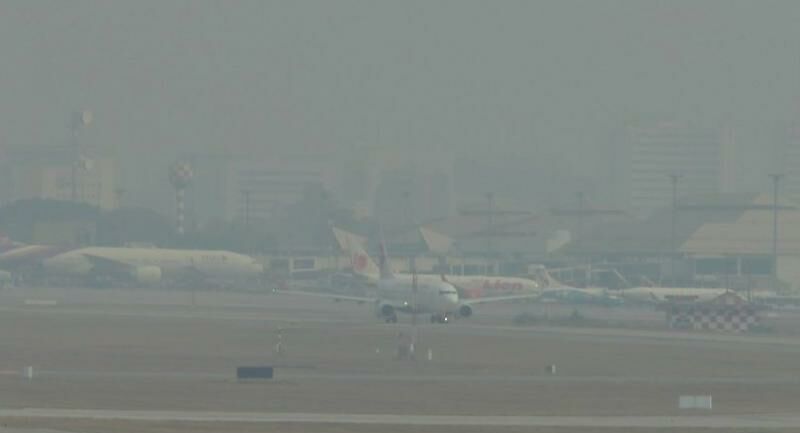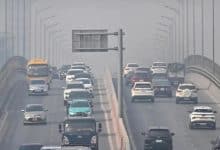Thailand’s Central Plain faces escalating smog crisis with soaring PM2.5 levels

Thailand’s Central Plain is grappling with an increasing smog crisis, as PM2.5 dust levels surged to a staggering 134.8 micrograms per cubic metre of air on Tuesday morning, a significant jump from Monday’s reading of 96.6µg/m³, the Geo-Informatics and Space Technology Development Agency (GISTDA) reported.
This morning, December 12, saw 15 provinces in the Central Plain, inclusive of Greater Bangkok, enveloped in red-alert levels of particulate matter 2.5 micrometres or less in diameter, commonly referred to as PM2.5. Chachoengsao province recorded the highest level at 134.8µg/m³, followed by Ang Thong at 113.5µg/m³, Samut Sakhon at 110.0µg/m³, Nonthaburi at 109.6µg/m³, and Sing Buri at 109.2µg/m³. Chon Buri, Pathum Thani, Bangkok, Lop Buri, Nakhon Pathom, Saraburi, Ayutthaya, Samut Prakan, Suphan Buri, and Kanchanaburi were also among the affected provinces.
The 15 provinces were marked with PM2.5 red zones, signalling the presence of heavy smog that poses serious health risks.
In addition to this, several central plain and northeastern provinces were dominated by orange PM2.5 levels, indicating that air pollution was beginning to detrimentally impact health in these regions.
On a more positive note, 30 out of 77 provinces, representing 38% of the regions, were within the government’s safe threshold of 37.5µg/m³. These provinces were located in the south, the north and certain areas of the northeast. Chiang Rai, with the least PM2.5 level of 7.4µg/m³, was included in this bracket, alongside Mae Hong Son (7.6µg/m³), Chiang Mai (8.3µg/m³), Phuket (10.5µg/m³), Lamphun (11.8µg/m³), Phayao and Phang Nga (12.9µg/m³), Chumphon (13.3µg/m³), and Amnat Charoen (14.0µg/m³).
A collection of provinces also recorded PM2.5 levels ranging from 15.8 to 37.2µg/m³. These included Mukdahan, Surat Thani, Krabi, Ranong, Lampang, Nan, Yasothon, Nakhon Si Thammarat, Phrae, Satun, Phatthalung, Yala, Narathiwat, Trang, Songkhla, Pattani, Nakhon Phanom, Sakon Nakhon, Si Sa Ket, Bung Kan, and Tak.
The GISTDA punctuated their report with a map of Thailand, highlighting regions with harmful PM2.5 levels as of 7am on Tuesday, reported Bangkok Post.
Latest Thailand News
Follow The Thaiger on Google News:


























